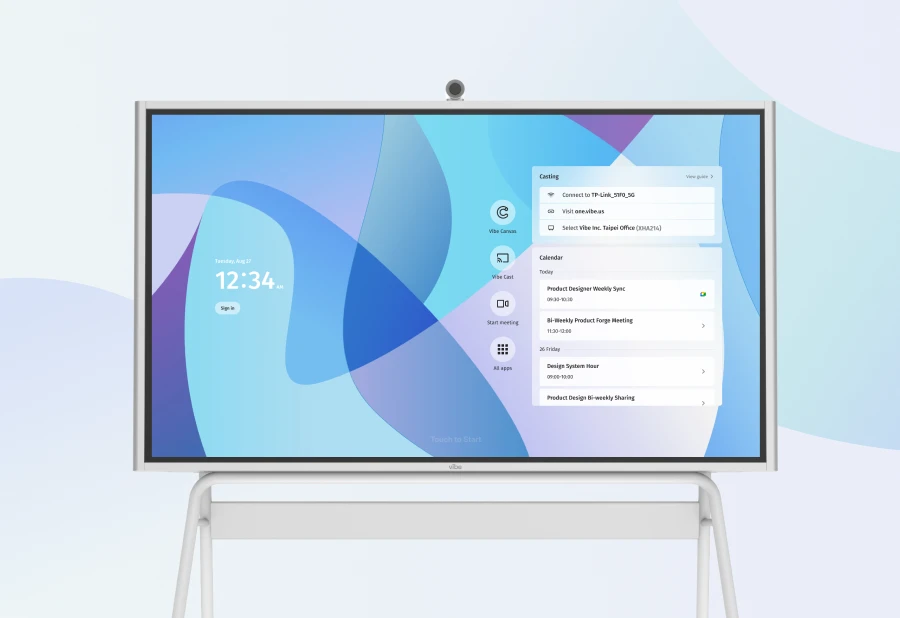You can learn a lot from numbers and financial statements. But to truly understand the success of a product or service, companies need to look to their consumers. Customers hold the power when it comes to choosing what items meet their needs. And this means you need a way to understand those needs.
User experience (UX) research is the tool organizations use to dive deeper into the thoughts, feelings, and habits of consumers — ultimately, to develop empathy for them. Because when you have empathy for your customers, you’ll know exactly what to create for them.
What is UX research?
You probably have a lot of questions about your audience. What motivates them? What are their struggles? How do they use a product? UX research uses investigative methods to reveal users’ needs, their product interactions, and the thoughts and feelings that accompany their product experience.
Combining qualitative and quantitative research techniques, like observation, interviews, and surveys, UX research can provide crucial insights about your audience. Ultimately, every decision you make in the design process should tie back to your UX research findings.
New trends and product variations hit the market every day, altering the perceptions and wants of an audience. To stay on the same page as your customers, UX research needs to be conducted as often as budget and resources allow.
Why is UX research important?
With any relationship, keeping up with a person’s interests and desires allows for a deeper connection. Similarly, keeping up with your customers through UX research opens the door to a better relationship for both parties. Here are some reasons why you need to start doing UX research:
- Guide the design process. You may have the most talented designers on your team, but that talent is a waste without a clear picture of what the customer actually needs. Instead of relying on your own sense of what’s best for the customer, consult UX research for a blueprint to the customer’s mind. This insider knowledge makes it easier to envision the precise features a product needs.
- Save resources. UX research may feel like a waste of time and resources. But if you’re simply designing a product that you think will be a big hit, you could end up wasting a lot of time, money, and talent on something bound to sit on the shelf. Taking the time to understand which precise design will be of the most use to users saves resources (and heartache) in the long run.
- Create brand loyalty. Customers who love and respect a brand’s product are more likely to stay true and faithful to that brand. UX research helps you build the foundation for a devoted customer base. People will stay loyal to a brand that’s loyal to their people.
The best UX research methods for designers
So, what does the UX research process look like? Research expert, The Nielsen Norman Group, breaks it into four phases: discover, explore, test, and listen. There are numerous research methods a company could use during each phase of the design process. To simplify, here are some of the most effective UX research methods, and scenarios of when to use them.
Discover
Before you design the latest and greatest product, you need to know what your audience actually needs. The discovery phase of UX research helps you understand your audience and the things that are valuable to them. The following research methods are great for the discovery phase:
Field study. Visit users in their native habitat (where they might normally use your products/services) and study their habits. Field studies are best for:
- Understanding how a user might interact with a product
- Discovering problems associated with their environment
- Creating a more genuine study outside of a lab
User interview. Meet with users one-on-one to learn about their wants, desires, and pain points. User interviews are best in these scenarios:
- Interacting with the customer on a more personal level
- Getting a first-hand account of their experience with your brand or product
Focus groups. Hold a group conversation with people from your target audience to uncover unique perspectives and experiences. Focus groups are great for:
- Accessing a variety of thoughts and opinions
- A cost-effective and convenient way to collect user information
 Conducting UX research at a computer lab inside a library.
Conducting UX research at a computer lab inside a library.Explore
Once you have an idea of who your customers are and what they need, it’s time to explore the designs that would benefit them. Researchers use these exploration methods to help them design with users in mind.
Persona building. With the data collected from interviews and field studies, create one or more buyer personas that represent your audience. These could be fictional people that match the users’ demographics, interests, and needs. Persona building is useful when:
- Providing a mental image of your audience that you can reference when making decisions that affect them
- Prioritizing tasks and features that would be of greatest value to the persona(s)
Card sorting. Using physical cards, or digital card-sorting software, participants must arrange items in an order that makes the most sense to them. Researchers may also ask participants to label the cards with titles they find most appropriate. Use this tactic when:
- Building the structure of a website or application
- Labeling page categories according to the users’ needs
Task analysis. Follow the steps a user takes to achieve a desired outcome on your website, system, or application. Task analysis works for:
- Understanding the tasks users perform to access content
- Simplifying the way users interact with your products
Test
Put your design to the test by giving users hands-on experience with the product. Use these methods to study the users’ interactions:
Usability testing. Let users interact with your product to determine if it’s intuitive and user-friendly. Usability testing works best for:
- Uncovering the system’s issues and technical errors
- Testing if the product’s functionality allows users to meet their goals
First click testing. Using a functioning website, prototype, or wireframe, see which link or navigational tool users click on first to complete a particular task. First click testing is good in these scenarios:
- Figuring out where to place menus, icons, and buttons on a website
- Choosing the labels that best guide users to their destination
Eye tracking. Eye tracking technology allows you to follow where users are looking on a device, such as a phone or computer. Use eye tracking when:
- Learning which features of a design capture a user’s attention
- Discovering whether certain areas are ignored or irrelevant
Listen
Though a design may be ready to go live, the design process never really comes to an end. Always be on the lookout for customer feedback that reveals their thoughts and feelings toward a product. Try these methods to keep tabs on your users’ experience.
Surveys. Ask customers, or prospective customers, a series of questions to understand their opinions and behaviors relating to your product. Surveys are excellent for:
- Gauging how satisfied customers are with the product
- Learning about product issues that can be remedied in future product versions
Analytics. Website analytics expose the habits and patterns of users on a website. Using resources like Google Analytics, companies can track details like user demographics, how many users visit the site, and how much time they spend browsing. Analytics help by:
- Determining if your target audience matches the site’s user demographics
- Assisting future content creation by seeing which content users like best
Review user commentary. Explore social media and review platforms to see what users are saying about your product. Reviewing user commentary is good for:
- Getting genuine feedback from users in a space they feel comfortable
- Keeping up with how your brand compares to competitors
 Taking the time to do proper UX research can benefit your product design.
Taking the time to do proper UX research can benefit your product design.Choosing the best research methods
So, which of these UX research methods are best for you? That depends on several factors, like: your timeline, available resources, and the product (website, app, device, etc.) being designed. Including each of these methods in your design process would produce a ton of useful data. But, if you lack the time, talent, and funding to do it all, try to use at least one method from each of the four UX research phases.
How to keep UX research organized
Research can involve a lot of moving parts, especially when multiple professionals are involved. Choosing the right organizational techniques and tools can help streamline UX research. Try the following for a more efficient UX research experience:
- Organize initiatives and tasks onto a kanban board to keep your team organized
- Use a decision matrix to prioritize research methods and relevant tasks and make a plan for carrying out the design process
- Create a flowchart to map out the user’s experience, document the design process, or chart research strategies
Whether you’re a designer, marketing professional, or tech guru, UX research is vital to the success of a product. Making sure your team has the right technology to collaborate during the research process is just as important. Learn how innovative teams use digital whiteboarding to present ideas, visualize complex problems, and stay connected in a remote workplace. Try a free demo and explore all of Vibe’s beneficial features today.








-1sbltxxq4FYxHrXrwJVLsCDNsXpqNa.webp)
-5Zp0pmSytvcuYDVs1LvuwplKuRneK0.webp)
